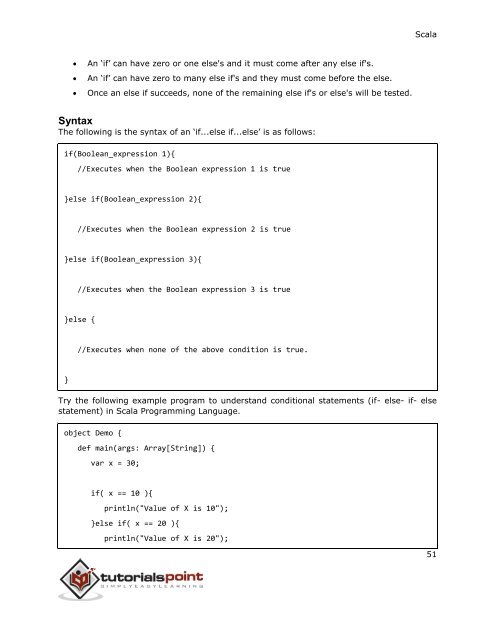You also want an ePaper? Increase the reach of your titles
YUMPU automatically turns print PDFs into web optimized ePapers that Google loves.
Scala<br />
<br />
<br />
<br />
An ‘if’ can have zero or one else's and it must come after any else if's.<br />
An ‘if’ can have zero to many else if's and they must come before the else.<br />
Once an else if succeeds, none of the remaining else if's or else's will be tested.<br />
Syntax<br />
The following is the syntax of an ‘if...else if...else’ is as follows:<br />
if(Boolean_expression 1){<br />
//Executes when the Boolean expression 1 is true<br />
}else if(Boolean_expression 2){<br />
//Executes when the Boolean expression 2 is true<br />
}else if(Boolean_expression 3){<br />
//Executes when the Boolean expression 3 is true<br />
}else {<br />
//Executes when none of the above condition is true.<br />
}<br />
Try the following example program to understand conditional statements (if- else- if- else<br />
statement) in Scala Programming Language.<br />
object Demo {<br />
def main(args: Array[String]) {<br />
var x = 30;<br />
if( x == 10 ){<br />
println("Value of X is 10");<br />
}else if( x == 20 ){<br />
println("Value of X is 20");<br />
51


